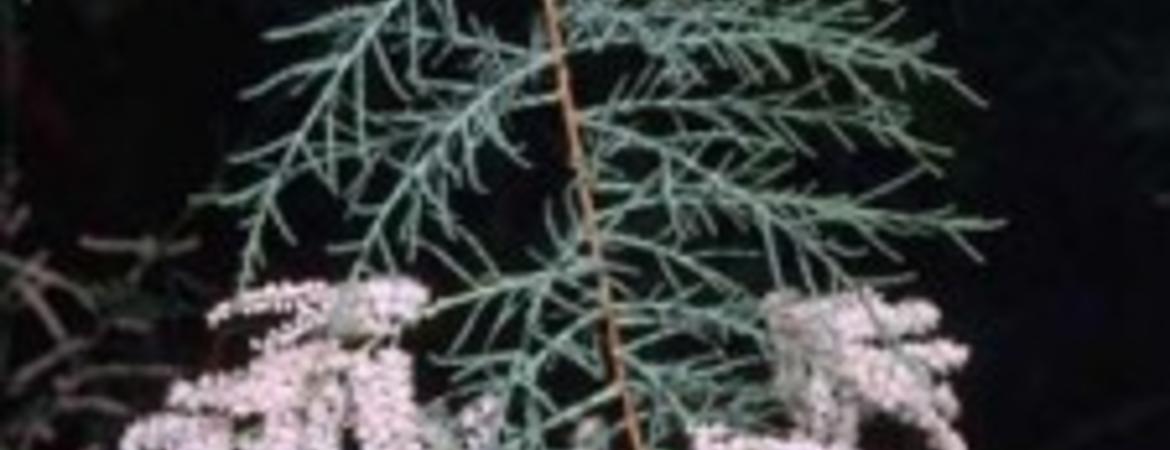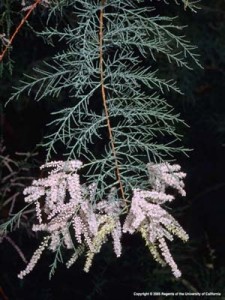
Damage: Once established, saltcedar is tolerant to high salinity and secretes salt at a high rate which is deposited on the soil surface to the detriment of native plant species. Saltcedar increases fire frequency within the riparian habitats it dominates because of its high levels of dead leaves and branches that provide fuel for fires. After fires, saltcedar sprouts rigorously, while native riparian trees and shrubs generally do not. Saltcedar groves push out native species, affecting their reproductive potential and contributing to a loss of natural biodiversity. Research implies that saltcedar could impact the structure and dynamics of streams by trapping and stabilizing sediments, increasing overbank flooding following high flow events and creating permanent sand bars in rivers. This pest also contributes to the decline of wetland communities as habitat refuge for wildlife. Species affected by the spread of saltcedar include the entire gamut of animals and plants associated with riparian communities, including several threatened or endangered species (i.e., desert pupfish, bighorn sheep, southwestern willow flycatcher, etc.).
Economic Impact: Saltcedar depletes the genetic diversity of California riparian communities, resulting in direct environmental damage and indirect economic impact on the state. It also may impact recreation opportunities in riparian areas. The dominance of saltcedar in natural communities can be seen as both a cause and a consequence of habitat degradation due to human activities, including dams and agricultural run-off. Saltcedar could also pose a substantial threat to agriculture due to its high use of water and its tendency to clog irrigation canals. It has been estimated that the cost incurred by salt cedar infestations in the southwest USA with respect to water supply, flood control, and wildlife to the benefits of eradicating this weed would be a net total benefit between $3.8 billion to $11.2 billion over a 55 year period (Zavaleta 2000, pp. 261-300 in Mooney & Hobbs, Invasive Species in a Changing World).
Distribution: Estimates of the saltcedar invasion in the southwest include over one million hectares of sensitive habitat ranging from northern Mexico to southern Canada which have become dominated by this species. States affected include California, Arizona, New Mexico, Texas, Colorado, Utah and Wyoming.
Research: Saltcedar control and eradication programs are being conducted throughout the western U.S. In most cases, the goal is to preserve or recover sensitive areas. Research on chemical control, prescribed burning and mechanical removal by bulldozers for the control of saltcedar has been initiated in small plots along several major riparian areas with good results, but these efforts do not lend themselves to large scale control of saltcedar. Preliminary research on biological control agents, in particular leaf feeding chrysomelid beetles, Diorhabda elongata. This beetle has caused spectacular mortality of saltcedar in some release areas in the southwest USA. However, the beetle has not been effective in all areas because of its diapause requirements. Additional strains of the beetle that have different diapausing requirements are being sourced from the home range of the beetle in Eurasia and will most likely provide establish and provide control in areas where the beetle has failed previously.
Want more? Go to the CISR website for more on Saltcedar
